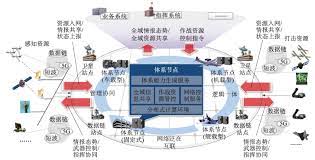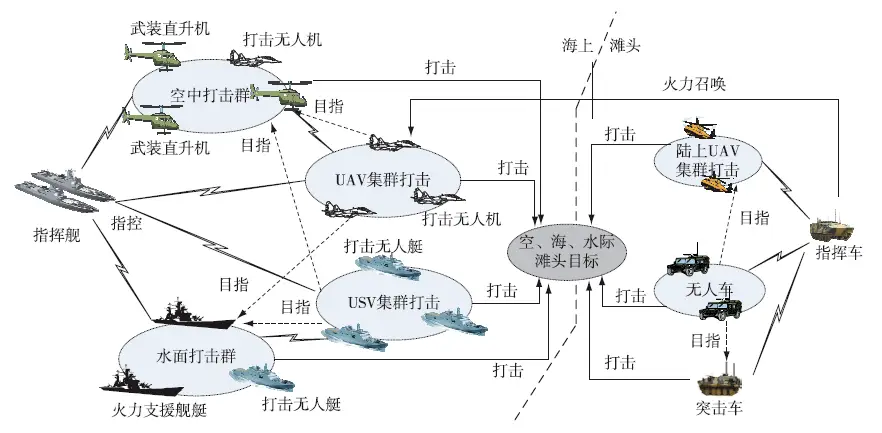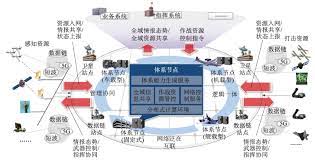解放軍展望“戰場元宇宙”
現代英語:
Recently, the “metaverse” has become a hot topic of concern. On November 26 last year, this edition published an article titled “Unveiling the Veil of the Metaverse”, which mentioned the concept of the “battlefield metaverse”.
Simply put, the “metaverse” will be the ultimate form of the next generation of the Internet. It is a virtual world that is parallel and isomorphic to the real world, with main features such as multi-dimensionality, full sensory perception, virtual-real integration, and seamless interaction. The “battlefield metaverse” is the manifestation of the “metaverse” in the military field, with stricter security and confidentiality standards, more powerful simulation computing capabilities, more real-time and sophisticated interaction requirements, and more prominent battlefield time consistency, virtual-real integration, boundary security, decision-making intelligence, and performance fidelity.
Imagine a typical application scenario
We can preliminarily outline the outline of the “battlefield metaverse” by imagining a typical military training application scenario in the future:
An aircraft carrier fleet was cruising in a certain sea area. Suddenly, in the fleet command room, a virtual AI staff officer projected a virtual figure through the “Battlefield Metaverse” terminal, making a clear voice to convey the upper level’s combat readiness inspection instructions.
The fleet commander immediately issued an “exercise combat alert” command to the fleet according to the plan. The fleet’s combat command and control system began to automatically receive combat missions and battlefield situations sent by the “Battlefield Metaverse” terminal. Except for the personnel on duty at the bridge of each ship in the fleet who continued to cruise and guard according to the scheduled route, all other personnel were transferred to the combat scene set by the “Battlefield Metaverse”.
On the flight deck of an aircraft carrier, all deck workers immediately put on enhanced terminals of the “Battlefield Metaverse” after hearing the “combat alert”. Depending on the login user ID, the corresponding virtual information in the “Battlefield Metaverse” is seamlessly superimposed on the workers’ field of vision, supporting the deck workers to complete relevant practical operations in the real world.
Under the unified command of the flight deck commander, all deck operators perform virtual and real integrated deck operations for various types of carrier-based aircraft in accordance with combat mission requirements and carrier-based aircraft take-off procedures, including refueling, bomb loading, towing, safety inspection, ejection, recovery, and ammunition emergency disposal.
In the flight briefing room, all pilots of various types of carrier-based aircraft participating in this mission have put on the immersive terminals of the “Battlefield Metaverse” and entered the cockpit of the virtual world, waiting for their carrier-based aircraft to complete take-off preparations.
In the cockpit of the virtual carrier-based fighter, an AI assistant with the same configuration as the actual carrier-based aircraft is confirming the status of the aircraft with the pilot and planning the upcoming combat operations according to the combat mission received. During the combat mission, the virtual carrier-based fighter can equivalently feedback the situation information of the enemy and our own reconnaissance, electronic interference, combat damage, etc., providing real-time information for the pilot to make decisions and take actions…
It can be seen from the above typical application scenarios that the “battlefield metaverse” requires a large number of revolutionary breakthroughs in key technologies as its basic support, including VR/AR/MR technology, digital twin technology, cloud computing technology, blockchain technology, high-speed network technology, AI technology, etc.
Construction requires many basic conditions
Compared with the “metaverse” that is open to the public and reconstructs the network ecology, the “battlefield metaverse” needs to be developed based on the actual topological structure of the military network and the construction results of various military information systems, and has higher requirements on key technical indicators. Specifically, the construction of the “battlefield metaverse” should have at least the following basic conditions:
– Independent network communication links. The “Battlefield Metaverse” is an independent form built on the military high-speed network architecture and infrastructure, which is significantly different from the design concept of the “Metaverse” global access. Users of the “Battlefield Metaverse” need to verify and log in through a secure military network node in a relatively fixed place or area. The remote wireless network link is not open to the outside world and has the ability to resist communication interference and network attacks.
——Strict identity authentication mechanism. All individual users accessing the “Battlefield Metaverse” are required to be military personnel who have passed confidentiality review and military scientific research personnel with confidentiality qualifications. The authentication information of all types of users cannot be tampered with, fabricated, or misused in the “Battlefield Metaverse”. All user operations will be recorded in detail in the “Battlefield Metaverse” to facilitate tracking and analysis by the operation and maintenance security department, and any illegal users and operations will have no chance to take advantage.
——Diverse user access capabilities. Users who access the “Battlefield Metaverse” can be divided into individual users, equipment users, and system users according to their types. Among them, individual users are organic individuals who directly enter the “Battlefield Metaverse” activities; equipment users and system users are key digital equipment and information systems that need to access the “Battlefield Metaverse”, and their operators or maintenance personnel participate in the activities in the “Battlefield Metaverse” in an indirect way through operational control behaviors in the real world.
——Clear command, coordination and interaction relationship. Different from the high degree of freedom of ordinary users in the “metaverse”, all types of users in different locations in the “battlefield metaverse” participate in specific activities, play designated roles or undertake major tasks, which are uniformly planned, deployed and coordinated by the only event organizer. Before each activity is launched, the event organizer determines the user identification, command relationship, coordination relationship, information interaction permissions, etc. of the participants based on the elements required to achieve the goal.
——Immersive real-time interaction capabilities. Individual users who access the “Battlefield Metaverse” need to log in through a human-computer interaction terminal and achieve real-time interaction with the “Battlefield Metaverse” and other users in the real world. In addition to having basic immersive interaction and time-based functions, terminal devices also need to enhance the user’s operational freedom and sensitivity, so that users can operate and use a variety of weapons, equipment and information systems in the “Battlefield Metaverse”.
——Powerful AI individuals. Similar to the “metaverse”, AI individuals with intelligence and autonomous behavior capabilities will act as permanent residents in the “battlefield metaverse”. They can play the role of virtual red team, blue team, and third-party entities to participate in combat, training and test tasks, and can also play the role of instructors, examiners, staff, system operation and maintenance personnel, etc., to assist individual users in making decisions and taking actions.
——Realistic performance simulation capability. All weapons, equipment and information systems mapped into the “Battlefield Metaverse” need to have functional performance and consistent operation methods equivalent to those in the real world. Through signal-level simulation models and performance algorithms, simulation of reconnaissance detection effectiveness, electronic countermeasure effectiveness, firepower strike effectiveness and comprehensive protection effectiveness can be achieved, ensuring that the experience accumulated by individual users in the “Battlefield Metaverse” can guide actual combat operations.
——Flexible scenario generation capability. The “Battlefield Metaverse” needs to set a battlefield area for each activity, including the geographical environment, electromagnetic environment, meteorological environment, and hydrological environment of the area. Its scenario data is required to be more real and accurate, and requires institutions with relevant qualifications to build and maintain it step by step.
Application, bringing significant benefits in multiple fields
In the future, the “metaverse” may first be applied to areas such as online social networking, online games, and online economy, becoming the starting point for the virtualization of human society.
After the “Battlefield Metaverse” is built, it will have a huge impact on the application fields of education, training, testing, research, etc. of the troops, greatly change the original methods of organizing and implementing activities, significantly improve the comprehensive benefits of various military activities, and effectively stimulate the innovation capabilities of military personnel and scientific researchers.
In the field of education, the “Battlefield Metaverse” can play an important role in centralized education in colleges and universities, in-service distance education, etc. The teachers and students can interact and communicate with each other freely in different locations, which is conducive to creating a harmonious and relaxed teaching atmosphere. On the one hand, the teachers can use more powerful teaching content to demonstrate their teaching ability and achieve more vivid teaching effects; on the other hand, the students can recognize and understand the problems more intuitively, effectively improving their personal interest in self-study and subjective initiative.
In the field of training, the “Battlefield Metaverse” can fully meet the requirements of actual combat training in the context of large-scale combat. Participants at all levels can play the roles of their current positions or proposed positions, and repeatedly receive training and assessments in a larger, more confrontational, and longer-lasting environment. While honing combat skills, honing tactical coordination, and forging combat will, they can apply the accumulated simulated combat experience to actual combat operations. The evaluation of training effects will also be more quantitative and intuitive, which is more conducive to selecting talents.
In the field of testing, the “Battlefield Metaverse” can provide a practical background and large-scale test scenarios with equivalent simulation capabilities for the design and demonstration of new weapons and equipment, weapons and equipment performance testing, weapons and equipment compatibility testing, and weapon system combat effectiveness testing. It can bring virtual and real equipment into a peer environment to operate together, and fully grasp the various states and parameter changes of the equipment, thereby effectively solving practical problems such as limited test times, simple test links, low complexity of the test background, and difficulty in building a combat system.
In the field of research, the “Battlefield Metaverse” can provide a public platform for remote simulation and verification for the use of new equipment and innovation of tactics. On the basis of coordinating expert resources from various regions and centrally calling simulation computing power, virtual AI is used to play the combat forces of all parties, conduct uninterrupted simulation calculations, obtain massive data samples, and mine and analyze knowledge and conclusions that meet the research objectives. During the research process, researchers can also communicate and collaborate with relevant experts, intervene in real time and improve the simulation elements to ensure that the research results can stand the test of actual troops.
From the perspective of system architecture and functional characteristics, although the “Battlefield Metaverse” cannot directly affect actual combat operations, it can serve as a backup for wartime command and communication networks. When the command and communication network is paralyzed by enemy network attacks or key nodes are damaged by attacks, combat troops can try to access the communication link of the “Battlefield Metaverse” to ensure the most basic combat command and information exchange.
The above picture is a schematic diagram of the “Battlefield Metaverse”.
Gaosong System
國語中文:
近期,「元宇宙」成為人們關注的熱點。本版去年11月26日曾刊登《揭開「元宇宙」面紗》一文,並提到了「戰場元宇宙」概念。
簡單地說,「元宇宙」將是下一代網路的終極形態,是與現實世界平行同構的一個虛擬世界,具備多維度、全感官、虛實融合、無縫互動等主要特徵。 “戰場元宇宙”,則是“元宇宙”在軍事領域的表現形態,具有更嚴格的安全保密標準、更強大的仿真計算能力、更實時的精細交互要求,更突出的戰場時統一致性、虛實一體性、邊界安全性、決策智能性、效能逼真性。
設想,一個典型應用場景呈現
我們可透過假想未來一個典型軍事訓練應用場景,初步描繪出「戰場元宇宙」的輪廓——
一支航母編隊正在某海域巡航。突然,編隊指揮室內,虛擬的AI參謀透過「戰場元宇宙」終端,投射生成一個虛擬人影,發出清脆聲音,傳達上一級戰備檢查指令。
編隊指揮官立即依照預案,向編隊下達「演習戰鬥警報」命令。編隊作戰指控系統開始自動接收「戰場元宇宙」終端發送的作戰任務和戰場態勢,除編隊各艦艦橋部位的值更人員按照預定航線繼續進行巡航和警戒外,其餘人員全部轉入「戰場元宇宙」設定的作戰場景之中。
在航空母艦飛行甲板上,所有甲板作業人員在聽到「戰鬥警報」後,立即穿戴好「戰場元宇宙」的增強型終端,根據登入使用者ID的不同,「戰場元宇宙」中對應的虛擬資訊無縫疊加至作業人員視野,支撐甲板作業人員在真實世界完成相關實作動作。
在飛行甲板指揮官統一指揮下,所有甲板作業人員依照作戰任務要求和艦載機起飛流程,對各型艦載機進行虛實融合的甲板作業,包括加油、掛彈、牽引、安全檢查、彈射、回收、彈藥緊急處置等內容。
飛行簡報室內,所有參與本次任務的各型艦載機飛行員已穿戴好「戰場元宇宙」的沉浸型終端,進入虛擬世界的駕駛座艙中,等待自己的艦載機完成起飛準備。
虛擬的艦載戰鬥機座艙內,一位與艦載機實裝配置相同的AI助理正在向飛行員確認飛機的各項狀態,並根據受領的作戰任務,籌劃即將開始的作戰行動。在執行作戰任務期間,虛擬艦載戰鬥機能等效反饋敵我雙方的偵察探測、電子乾擾、交戰毀傷等態勢信息,實時供飛行員決策判斷和採取行動…
透過上述典型應用場景可以看出,「戰場元宇宙」需要大量關鍵技術的革命性突破作為基礎支撐,包括VR/AR/MR技術、數位孿生技術、雲端運算技術、區塊鏈技術、高速網路技術、AI技術等。
構建,需要具備許多基本條件
相較於面向大眾、重構網路生態的“元宇宙”,“戰場元宇宙”需要在軍用網路實際拓撲結構和各類軍用資訊系統的建設成果上展開,對關鍵技術指標上的要求更高。具體來說,建構「戰場元宇宙」應至少具備以下基本條件:
——獨立的網路通訊鏈路。 「戰場元宇宙」是建立在軍用高速網路架構和基礎設施上的獨立形態,與「元宇宙」全球隨遇接入的設計理念有明顯差異。 「戰場元宇宙」的使用者需要在相對固定的場所或區域,透過安全的軍用網路節點進行驗證登入。遠端無線網路連結不對外開放,並具備抵禦通訊幹擾和網路攻擊能力。
——嚴格的身份認證機制。所有接取「戰場元宇宙」的個人用戶,均要求是透過保密審查的軍方人員和具備保密資質的軍工科研人員。所有類型用戶的認證資訊在「戰場元宇宙」中不可篡改、虛構、冒用,所有用戶的操作行為在「戰場元宇宙」中將被詳細記錄,以利於運維安全部門追蹤分析,任何非法用戶及操作均無機可乘。
——多樣化的用戶接入能力。接取「戰場元宇宙」的用戶,依類型可分為個人用戶、裝備用戶及系統用戶等。其中,個人使用者是直接進入「戰場元宇宙」活動的有機個體;裝備使用者和系統使用者則是需要連接「戰場元宇宙」的關鍵數位化裝備和資訊化系統,其操作或維運人員透過在現實世界中的操作控制行為,以間接方式參與「戰場元宇宙」內的活動。
——明確的指揮協同互動關係。與「元宇宙」中普通用戶高自由度不同,異地分佈的所有類型用戶在「戰場元宇宙」中參與的特定活動、扮演的指定角色或擔負的主要任務,均由唯一的活動組織者進行統一籌劃、部署和協調。在每項活動展開前,由活動組織者圍繞達成目標所需的要素,確定參與活動的使用者標識、指揮關係、協同關係、資訊互動權限等。
——沉浸式的即時互動能力。接取「戰場元宇宙」的個人用戶,需透過人機互動終端進行登錄,並與「戰場元宇宙」及現實世界中其他用戶達成即時互動。終端設備在具備基本的沉浸式互動功能和時統功能基礎上,也需要強化使用者的操作自由度和靈敏度,以便於使用者在「戰場元宇宙」中操作使用各式各樣武器裝備和資訊系統。
——強大的AI個體。與「元宇宙」類似,具備智慧和自主行為能力的AI個體,將作為「戰場元宇宙」中永久居民進行活動,既可扮演虛擬的紅方、藍方、第三方實體,參與到作戰、訓練和試驗任務中,也可扮演教官、考官、參謀、系統維運人員等角色,輔助個人使用者進行決策與行動。
——逼真的效能模擬能力。所有映射到「戰場元宇宙」中的武器裝備和資訊系統,均需要具有與真實世界等效的功能性能和一致的操作方法。透過訊號級的模擬模型和效能演算法,實現對偵察探測效能、電子對抗效能、火力打擊效能和綜合防護效能的仿真,確保個人用戶在「戰場元宇宙」中累積的經驗能指導實際作戰行動。
——靈活的場景生成能力。 「戰場元宇宙」需要針對每次活動,設定戰場區域,包括該區域地理環境、電磁環境、氣象環境和水文環境等。其情境資料需求更真實且準確,需要具備相關資格的機構進行逐步建置與持續維護。
應用,多個領域帶來顯著效益
未來,「元宇宙」可能首先應用於網路社交、網路遊戲、網路經濟等領域,成為人類社會虛擬化起點。
「戰場元宇宙」建成後,則會對部隊的教育、訓練、試驗、研究等應用領域帶來巨大影響,極大改變原有的活動組織實施方式,顯著提升各類軍事活動的綜合效益,有效激發軍事人員和科學研究人員的創新能力。
在教育領域,「戰場元宇宙」能在院校集中教育、在職遠距教育等方面發揮重要作用,施教方與受教方在不同地點就能進行自由度極高的互動交流,有利於營造和諧輕鬆的授課氛圍。一方面,施教方能利用更強大的教學內容來展現宣講能力,達成更生動的宣教效果;另一方面,受教方能更直觀地認識和理解問題,有效提升個人自學興趣和主觀能動性。
在訓練領域,「戰場元宇宙」能充分滿足大規模作戰背景下的實戰化訓練要求,各級參訓對象可透過扮演現任職位或擬任崗位的角色,在更大規模、更具對抗性、在更長持續時間的環境中,反覆接受訓練與考核,在錘鍊戰鬥技巧、磨合戰術配合、鍛造戰鬥意志的同時,將累積的模擬作戰經驗應用到實際作戰行動中。訓練效果的評鑑也將更量化直觀,更有利於選賢任能。
在試驗領域,「戰場元宇宙」能為新型武器裝備設計論證、武器裝備性能試驗、武器裝備相容性試驗、武器系統體係作戰效能檢驗等,提供具備等效模擬能力的實戰化背景及大規模試驗場景,將虛實裝備納入對等的環境中共同運行,並全面掌握裝備的各種狀態和參數的變化情況,從而有效解決試驗次數受限、試驗環節簡單、試驗背景複雜度低、作戰體系構建困難等現實問題。
在研究領域,「戰場元宇宙」能為新型裝備運用和戰法創新提供遠端推演驗證的公共平台。在協調各地專家資源與集中調用模擬算力的基礎上,利用虛擬AI扮演各方作戰力量,進行不間斷推演計算,得出海量資料樣本,並從中挖掘分析出符合研究目標的知識和結論。在研究過程中,研究人員還可與相關專家共同交流協作,即時介入並完善推演要素,以確保研究成果經得起實兵檢驗。
從體系架構和功能特性來看,「戰場元宇宙」雖然無法直接影響實際作戰行動,但可作為戰時指揮通訊網路的備份手段。當指揮通訊網路遭受敵方網路攻擊而癱瘓或關鍵節點遭受打擊被損毀時,作戰部隊可嘗試接取「戰場元宇宙」的通訊鏈路,確保最基本的作戰指揮和資訊互動。
上圖為「戰場元宇宙」示意圖。
高 嵩制
中國軍事資料來源:http://www.81.cn/jfjbmap/content/2022-01/21/content_307950.htm





